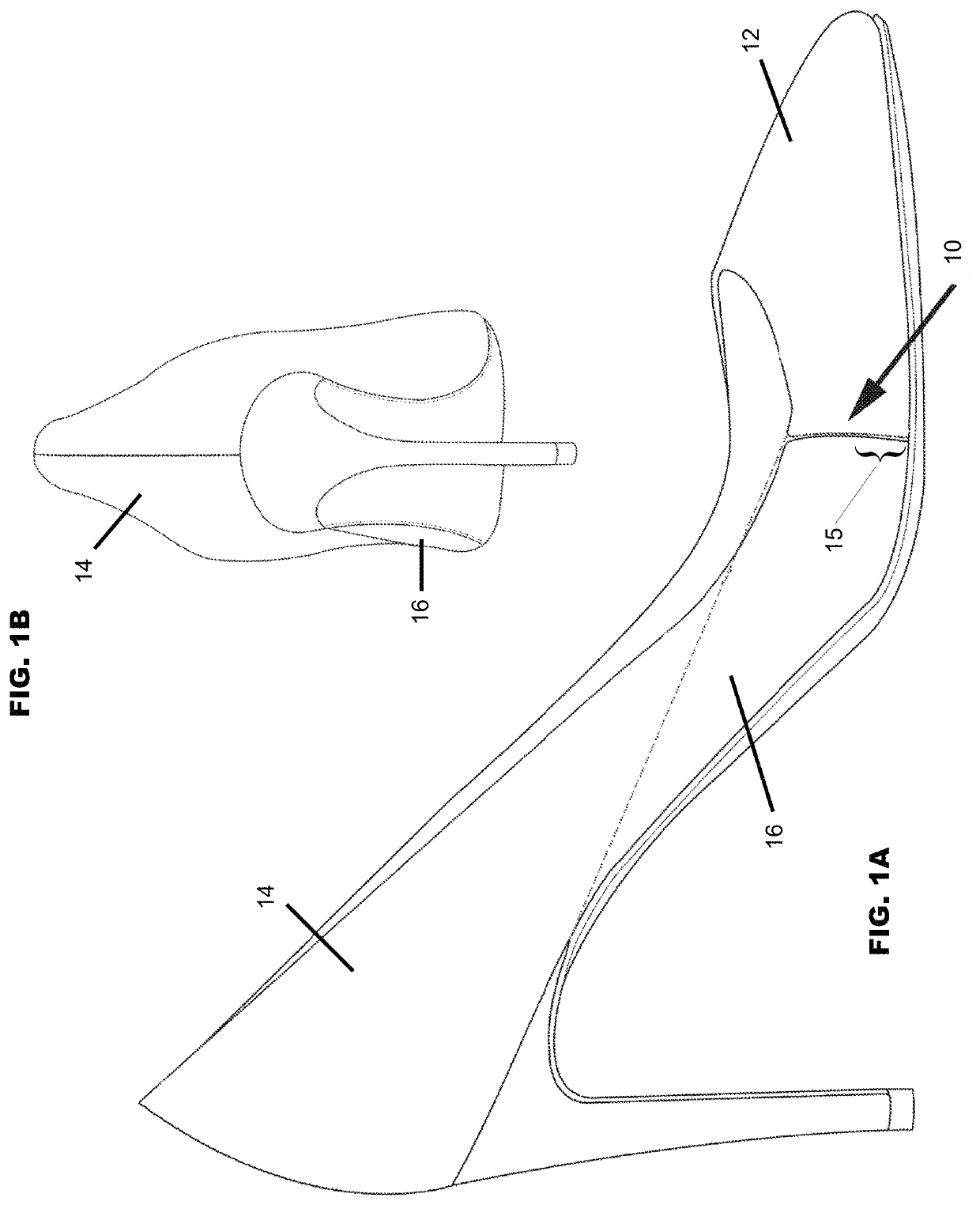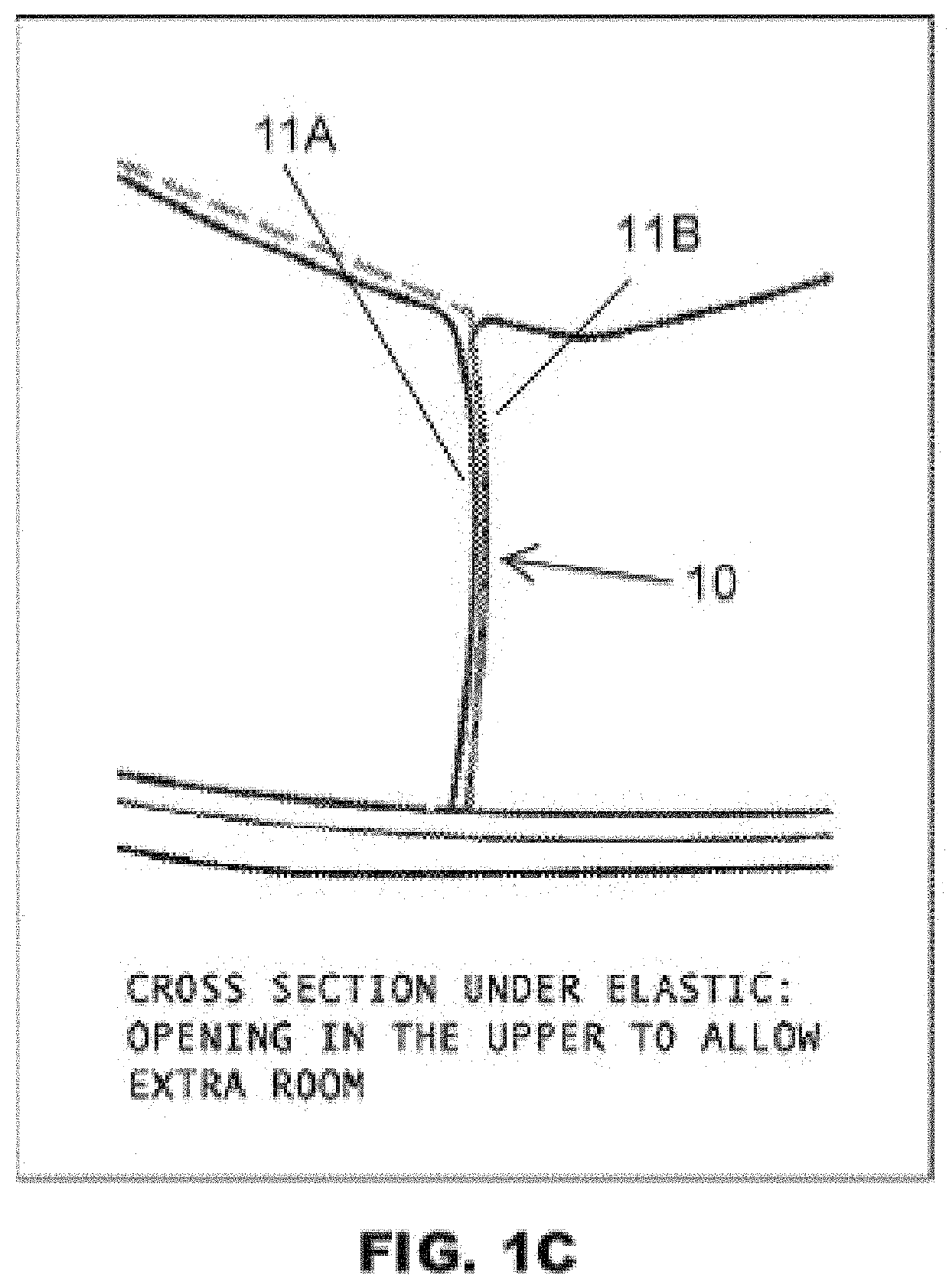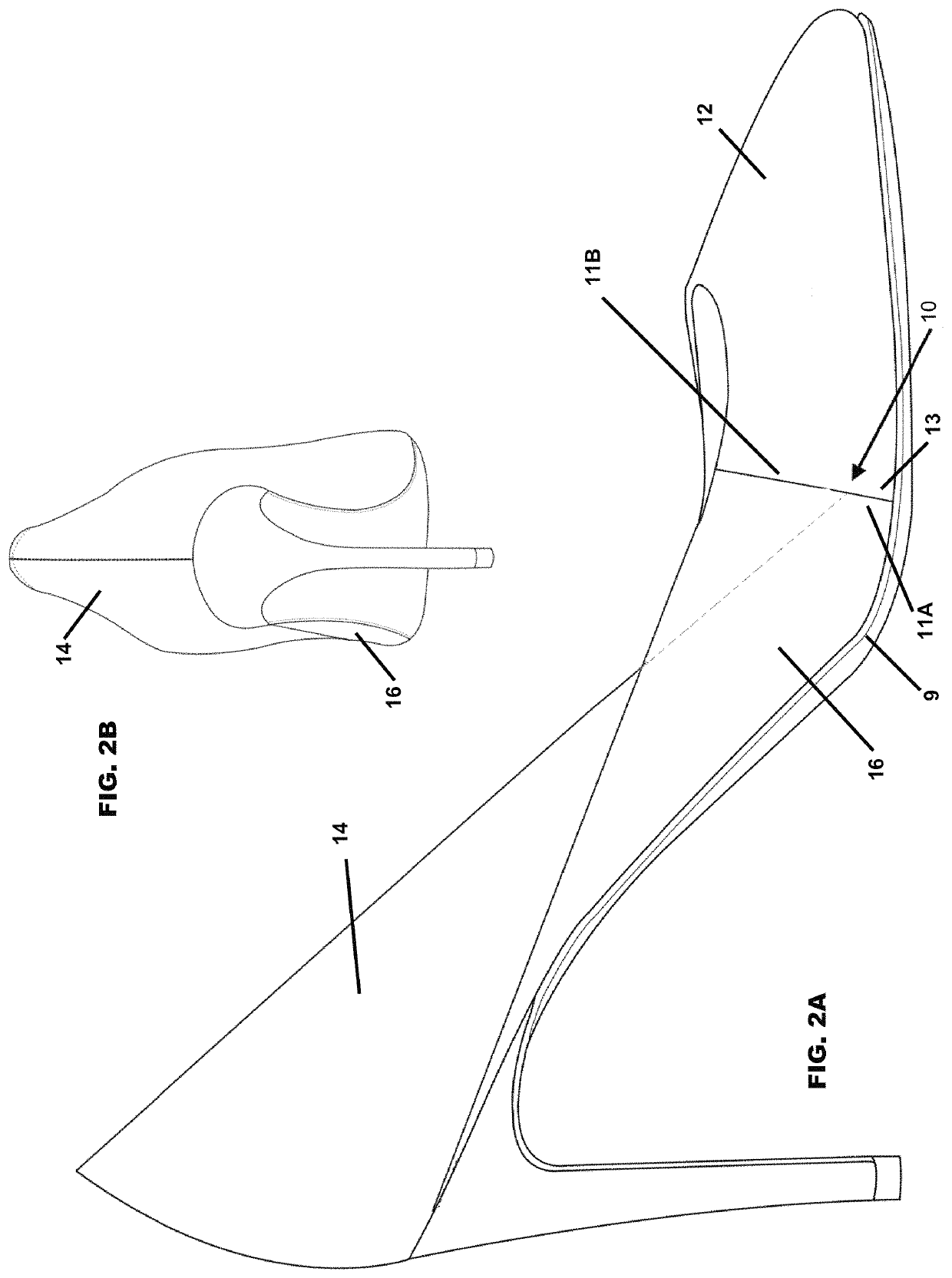Shoe with flexible upper
a flexible upper technology, applied in the field of shoes, can solve the problems of increased height of wearers, pain and blistering upon wear, discomfort, etc., and achieve the effect of providing comfort and flexibility for wearers and limited flexibility
- Summary
- Abstract
- Description
- Claims
- Application Information
AI Technical Summary
Benefits of technology
Problems solved by technology
Method used
Image
Examples
Embodiment Construction
Terminology
[0026]High heels shoes typically consist of:
[0027]I) Upper—holds the shoe onto the foot and connected to the outsole.
[0028]II) Insole—perimeter stitched to upper forming bottom of interior portion.
[0029]III) Outsole—leather or rubber material lining the bottom of the shoe, affixed to the insole.
[0030]IV) Topline—top edge of the upper.
[0031]V) Heel—provides support for the heel of the foot.
[0032]VI) Lining—covers the inside seams of a shoe, on the inside of the upper.
[0033]There are three segments or portions of the high heel shoe:
[0034]Toe-end—end closer to the wearer's toe, it can take on many different shapes but is traditionally either pointed, rounded or squared in nature.
[0035]Heel-end—end closer to the wearer's heel, where the upper and insole attach to the heel.
[0036]Midsole—between the two ends of the shoe, approximately beneath the arch of the foot (between the toe and heel).
[0037]The invention is a high heel shoe with an upper that provides comfort and flexibili...
PUM
 Login to View More
Login to View More Abstract
Description
Claims
Application Information
 Login to View More
Login to View More - R&D
- Intellectual Property
- Life Sciences
- Materials
- Tech Scout
- Unparalleled Data Quality
- Higher Quality Content
- 60% Fewer Hallucinations
Browse by: Latest US Patents, China's latest patents, Technical Efficacy Thesaurus, Application Domain, Technology Topic, Popular Technical Reports.
© 2025 PatSnap. All rights reserved.Legal|Privacy policy|Modern Slavery Act Transparency Statement|Sitemap|About US| Contact US: help@patsnap.com



